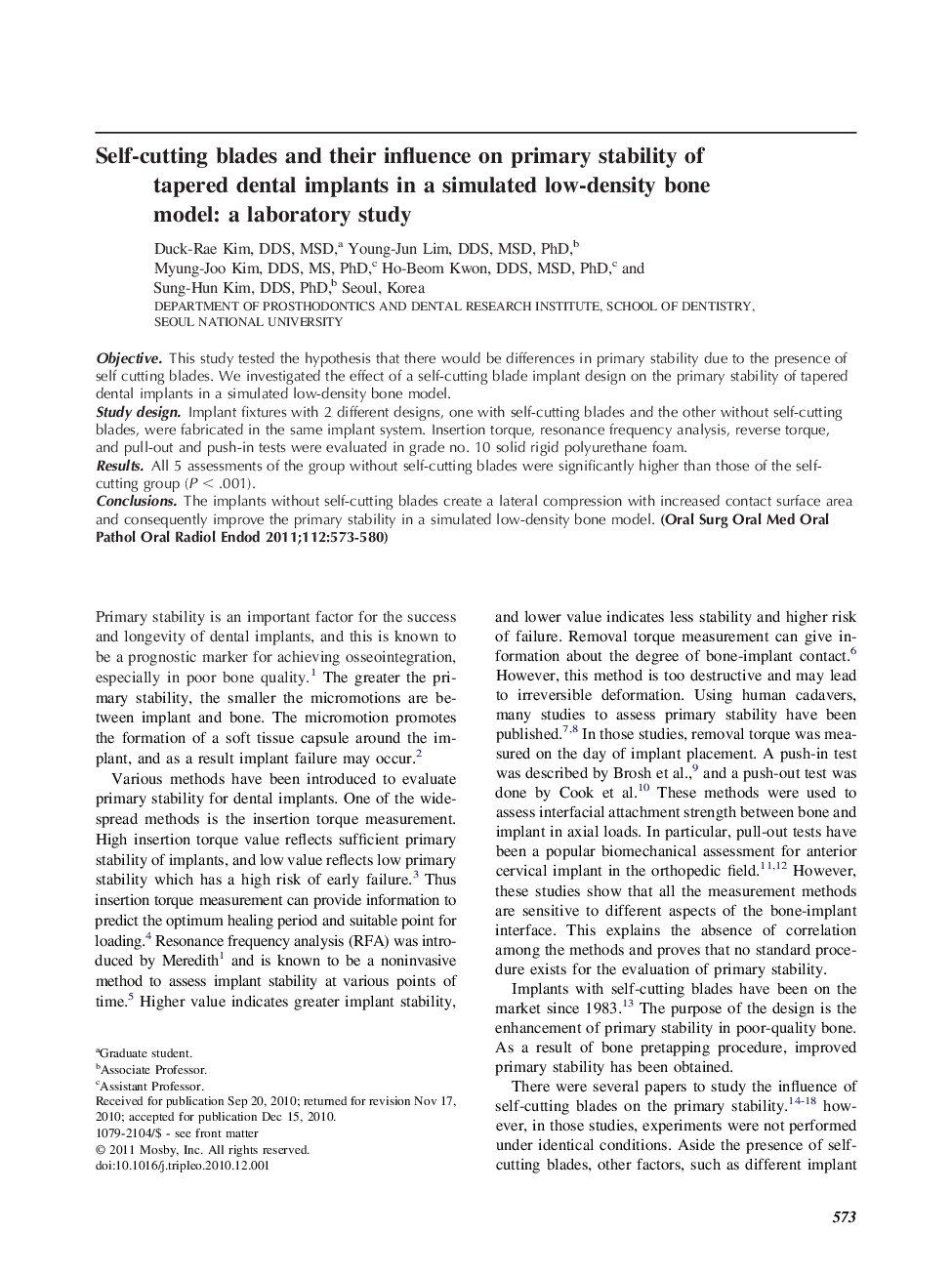| Article ID | Journal | Published Year | Pages | File Type |
|---|---|---|---|---|
| 6059570 | Oral Surgery, Oral Medicine, Oral Pathology, Oral Radiology, and Endodontology | 2011 | 8 Pages |
ObjectiveThis study tested the hypothesis that there would be differences in primary stability due to the presence of self cutting blades. We investigated the effect of a self-cutting blade implant design on the primary stability of tapered dental implants in a simulated low-density bone model.Study designImplant fixtures with 2 different designs, one with self-cutting blades and the other without self-cutting blades, were fabricated in the same implant system. Insertion torque, resonance frequency analysis, reverse torque, and pull-out and push-in tests were evaluated in grade no. 10 solid rigid polyurethane foam.ResultsAll 5 assessments of the group without self-cutting blades were significantly higher than those of the self-cutting group (P < .001).ConclusionsThe implants without self-cutting blades create a lateral compression with increased contact surface area and consequently improve the primary stability in a simulated low-density bone model.
